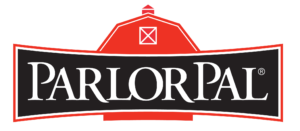Control Ammonia in Dairy Calf Housing for a Better Start
On a well-managed dairy farm, a young calf embodies the highest genetic potential for future milk production. It’s vital for dairy producers to ensure these animals are raised in conditions that prepare them for optimal health and performance.
The environment of a dairy calf hutch or pen can either harm or support the health of that animal based on a number of variables, one of which is air quality.

Calf hutches are washed and disinfected approximately every 75 days on many farms as the housing is prepared for a new group of newborns. While that process works to create a clean, healthy environment, the build up of manure and contamination of bedding can quickly expose the calf to harmful ammonia.
Ammonia is an unavoidable consequence of animal production. As cows consume the necessary protein for growth, about 67% of the nitrogen in that protein is excreted as urine and feces, much of which is in the form of urea1.

The enzyme urease breaks the urea in the manure down into ammonia and carbon dioxide. The amount of ammonia released will vary based on the amount of urea in the cow’s system, the level of mixing of urine and feces, and the temperature. In calf housing, there are a number of positive conditions for ammonia production, including the warm bedding. Higher temperatures equate to higher ammonia production.
Why Does Ammonia in Calf Housing Matter?
Ammonia gas is harmful to a calf’s natural respiratory defenses and eye health. Cows have cilia, or tiny hair-like fingers, that line the trachea. These cilia work to push dust, pathogens, and other foreign material out of the trachea and keep them from entering the lungs. Ammonia exposure can stunt or paralyze the sweeping motion of the cilia, allowing foreign invaders open access to the cow’s respiratory system. The result is higher incidences of pneumonia and other respiratory diseases that can cause illness, and retard growth and performance. By impairing the immune system, the calf could be more susceptible to other pathogens.
According to the Fertilizer Institute in 2010, average ammonia concentrations in cattle housing was found to be around or less than 100 ppm2. Ammonia can be detected by the non-desensitized human nose as levels as low as 5 ppm. And any concentration of ammonia can irritate eyes and the respiratory tract.
According to the Fertilizer Institute in 2010, average ammonia concentrations in cattle housing was found to be around or less than 100 ppm2. Any concentration of ammonia can irritate eyes and the respiratory tract.
Maintain Optimal Air Quality in Calf Housing with ParlorPal
ParlorPal is a biodegradable, natural mineral acid that eliminates ammonia in production environments. It’s safe to use on straw in calf hutches, on sand in free stall barns or on any other bedding substrate. As a dry, formulated product, it is safe to apply at any time during the production cycle. One dairy in South Dakota has found tremendous benefit from applying ParlorPal in the calf housing to control ammonia and get the cows off to a better start.

By binding the ammonia, ParlorPal not only creates a safer environment for animals and workers, it extends the life of bedding to help lower costs. ParlorPal works by reducing pH, which also creates an environment where fly larvae cannot thrive.
Get your calves off to the healthiest start possible. Contact us about the opportunities for ParlorPal on your farm and to learn more about how other farms are using the product.
1 Ohio Dairy Industry Resources Center, Ohio State University Extension, Ammonia Emissions from Dairy Farms – The Basics, BUCKEYE DAIRY NEWS, VOLUME 7 ISSUE 2, Dr. Bill Weiss
2Washington State University Extension & WSU College of Veterinary Medicine; https://s3.wp.wsu.edu/uploads/sites/2147/2015/03/CalfEnv4-EnvironmentEffects1.pdf
